Collective Teacher Efficacy is the collective belief of teachers in their ability to positively affect students. With an effect size of d=1.57 Collective Teacher Efficacy is strongly correlated with student achievement. Here is a quick overview of John Hattie’s “new number one” influence.
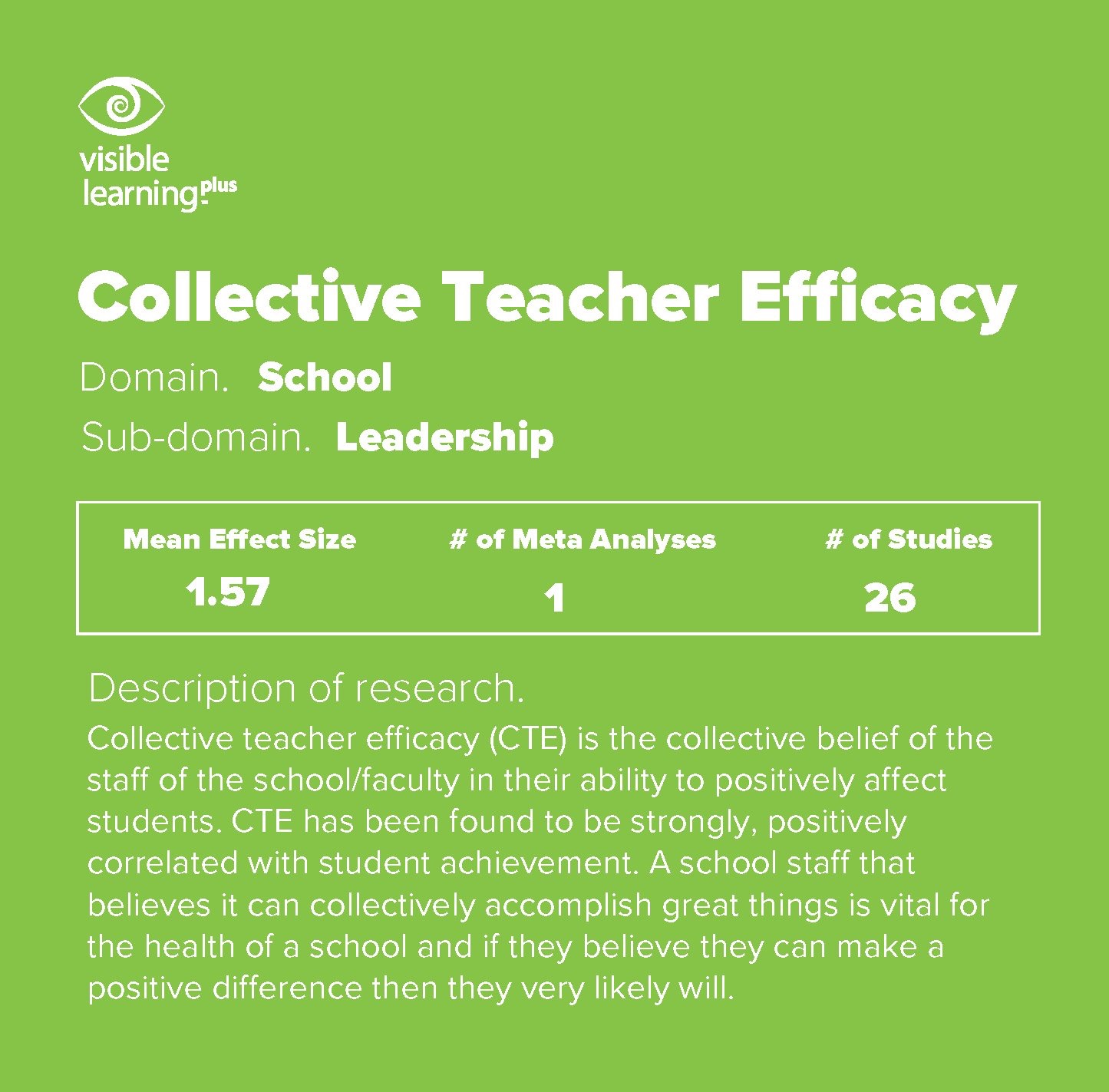
Image (c) Visible Learning Plus – www.visiblelearningplus.com
John Hattie and his team have presented Collective Teacher Efficacy (CTE) as the “new number one” influence related to student achievement several times, e.g. at the Annual Visible Learning Conference (2016) or the Collaborative Impact Conference 2017. Although Hattie’s latest published list of 195 effects in The Applicability of Visible Learning to Higher Education (2015) puts CTE only in second place, its effect size of d=1.57 is still huge: it is more than two times bigger than that of feedback (d=0.72), and almost three times bigger than the effect of classroom management (d=0.52). The message seems to be clear: together teachers can achieve more, especially if they collectively believe that they can do so!
Hattie’s new factor is based on Rachel Jean Eells’ “Meta-Analysis of the Relationship Between Collective Teacher Efficacy and Student Achievement” (PDF). For her Ph.D. thesis at the Loyola University Chicago, she has conducted a meta-analysis of 26 studies on Collective Teacher Efficacy and found that “the weighted average effect size of r-mean (outlier removed) was 0.617″. This number can easily be converted into Cohen’s d=1.568, the number Hattie reports.
The concept of Collective Teacher Efficacy itself is much older. It was introduced in the 1990s by Albert Bandura and is rooted in his concept of self-efficacy, Bandura (1993, 1997). He defines collective efficacy as “a group’s shared belief in the conjoint capabilities to organize and execute the courses of action required to produce given levels of attainment.” Bandura found that the positive effects of CTE on student academic performance more than outweigh the negative effects of low socioeconomic status.
His findings were later confirmed by Goddard, Hoy, and Hoy (2000). In their studies, they could demonstrate that between-school differences of collective teacher efficacy were more important in explaining student achievement than socioeconomic status. Moreover, Hoy, Sweetland, and Smith (2002) found that the strength of CTE helps the positive effects of individual teacher efficacy and vice versa. A stronger collective teacher efficacy seems to encourage individual teachers to make a more effective use of the skills they already have.
According to Hattie’s presentation at the Collaborative Impact Conference 2017 “Collective Teacher Efficacy” is not about making teachers feel good about themselves. It is more complicated than just believing you can make a difference collectively. One of the authors that come closest to Hattie’s definition “collaborative conversation based on evidence” is Jenni Donohoo with her book “Collective Efficacy: How Educators’ Beliefs Impact Student Learning“.
For further reading and a practical guide about how to build Collective Teacher Efficacy in your school, you should read the short and excellent Issue Brief “Building Collective Efficacy” by Dana Brinson and Lucy Steiner.
Update
In recent a video John Hattie explains what Collective Teacher Efficacy is, and what it isn’t. Have a look.
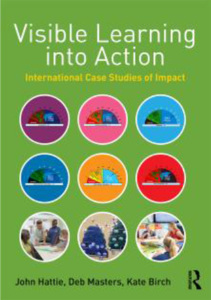
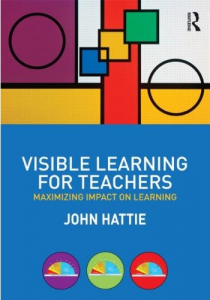
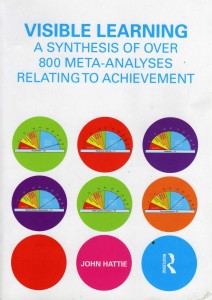 Read the books. Order your copy on Amazon or find them in a library.
Read the books. Order your copy on Amazon or find them in a library.
References:
- BANDURA, A. (1993). Perceived self-efficacy in cognitive development and functioning. Educational Psychologist, 28 (2), 117–148. (Abstract)
- BANDURA, A. (1997). Self-efficacy: The exercise of control. New York, NY, US: W H Freeman. (Book)
-
BRINSON & STEINER (2007): Building Collective Efficacy: How Leaders Inspire Teachers to Achieve. Issue Brief. The Center for Comprehensive School Reform and Improvement. (PDF)
- EELLS, R. J. (2011): Meta-Analysis of the Relationship Between Collective Teacher Efficacy and Student Achievement, (Abstract / Full text)
- GODDARD, HOY, WOOLFOLK HOY (2000): Collective Teacher Efficacy: Its Meaning, Measure, and Impact on Student Achievement. In: American Educational Research Journal Vol 37, Issue 2, pp. 479 – 507 (Abstract)
- HATTIE, J. (2015): The Applicability of Visible Learning to Higher Education. In: Scholarship of Teaching and Learning in Psychology, 1 (1), 79-91. (Abstract)
- HATTIE, J. (2016). Third Visible Learning Annual Conference: Mindframes and Maximizers, Washington, DC, July 11, 2016. (Programme)
- HOY, SWEETLAND, SMITH (2002). Toward an organizational model of achievement in high schools: The significance of collective efficacy. Educational Administration Quarterly, 38 (1), 77–93. (Abstract)
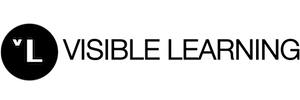
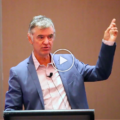




Dear Sebastian, you may wish to update your list of effects with the newer one on our website. As you know Professor Hattie is continually revising and updating his database of what works best in education.
The version uploaded here http://visiblelearningplus.com/content/250-influences-student-achievement was updated in November 2017 and the intent is to update it about once every six months.
You will also note Professor Hattie would prefer it if people moved away from ranking the effect sizes.
Kind regards
Dear Shaun,
Thank you for your comment and for pointing me to the updated list! I will try to update the list on this website as soon as possible.
In the VL plus list from August 2017 the “new number one influence” CTE was only “number two”. I checked the source of CTE but couldn’t find a way to check the source meta-studies of “teacher estimates of achievement”. Do you know which metas belong to this influence that was d=1.62 and is now d=1.29?
Moreover, I was thinking about creating an enhanced interactive ranking list that lets people switch between / combine different domains and move away from the linear one-dimensional design. Do you think this would be useful?
Kind regards, Sebastian
It was wonderful to learn from PROFESSOR JOHN HATTIE ,that,CTE .has a huge effect in learning. In my country we use to have bigger classes with more than 100 pupils in class taught by one teacher. how does this work?
Regards:
I am a teacher from Bogotá, Colombia and I have been involved with teacher professionalization for quite some time, at the moment I am teaching my colleagues in my own institution to improve student achievement and I found John Hattie’s research, however I would like to know if I can make a translation of the article by Dana Brinson and Lucy Steiner to deliver it to the professors of my institution.
Thank you very much for the information that you provide for the improvement of education in the world and I will wait for your response.
Sincerely,
Camilo Pulido
In other words, if you are being negative you are responsible for dragging things down further! Hard to sustain positive optimism for those of us, probably most of us, who battle against societal apathy, political opportunism and plain administrative barriers.
Resources are finite. Positivism and optimism just the same.
I can feel your sense of hopelessness. My first year of teaching was in 1964.Many years later, with various degrees, administrative positions as well as teaching I can only hope that you will try to be “true to your own views and experiences”. For years schools have been made to think their job was not “education”, but that of a social worker as well.
The injustices of the “class-system based on finances is Not the concern of educators.
Strive to be your best and that will be enough for your students. More than anything, young people need to experience authenticity from their teachers.
How can they prove causation? Chicken and egg. More likely that the reality is reflected in the attitudes than the other way around isn’t it?